Planning a trip to Tokyo? Wondering if the Tokyo Tower should be on your list?
As a current resident who enjoys exploring Tokyo, I can confidently say: it’s definitely worth the visit.
For photographers, it’s a great spot to capture the city. Architecture buffs will appreciate seeing one of Tokyo’s most iconic structures up close. For those of you wanting to explore Tokyo, it’s a great place to view and appreciate the size and scale of the largest city in the world.
Guide to Tokyo Tower
In this guide to Tokyo Tower, I’ve covered all the essentials and added a few extras: from ticketing details and practical tips to a dive into its history and features. Beyond its Tokyo skyline views, discover the tower’s dining spots, shopping options, and more. I’ll also tackle the most common questions about Tokyo Tower to ensure a smooth visit.
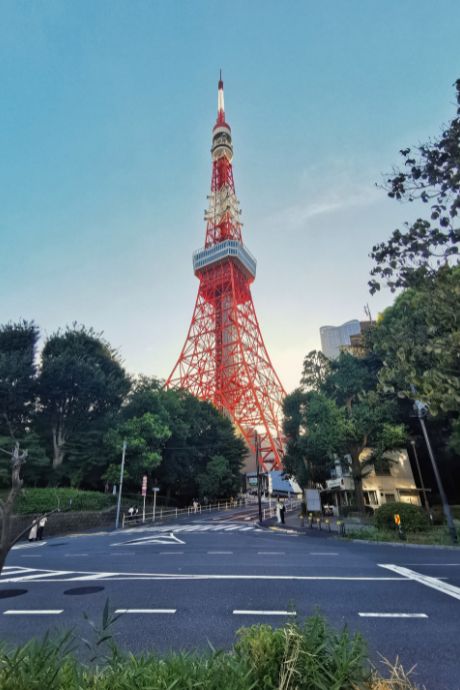
How to Get Tokyo Tower Tickets
Getting Tokyo Tower tickets can be a very simple process. We will guide you through the different ticket options and prices and how to purchase them.
- Klook offers the option for all ticket options, including Main Deck, Top Deck or a Main Deck Unlimited Pass (a great option if you want to view both during the day and at night time)
- GYG offers only Main Deck Tickets
- The Klook Greater Tokyo Pass includes discounted tickets to visit the Tokyo Tower Main Deck, as well as many other Tokyo attractions.
- Can also bundle your Red Tokyo Tower Passport
How and where to purchase tickets.
The simplest way to get tickets for Tokyo Tower is to purchase in advance through either Klook or Get Your Guide. Using Klook or Get Your Guide, you can select the exact date and time you want to visit, the type of tickets you want, and how many. This is excellent for visitors who plan out their vacation days. You won’t have to worry about what time slot you will be allocated, and you can plan your day accordingly.
The Klook Pass for Greater Tokyo is a great option to purchase discounted Tokyo Tower Main Deck tickets, as well as discounted access to many other Tokyo attractions.
Tokyo Tower tickets can also be purchased at the ground floor ticket booth on the same day. The ticket booth has staff who will help you buy your ticket and explain when you can enter the tower.
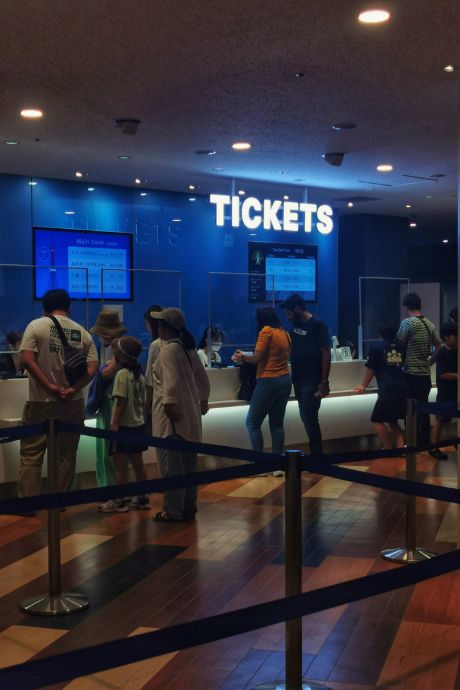
Tokyo Tower Price
There are two different Tokyo Tower ticket prices. One ticket is for the Main Deck, which is 150 metres, and one is for the Top Deck, which is 250 metres. You can enter the main deck anytime by purchasing a Top Deck ticket. And then, you will go up to the top deck at your allocated time.
Tokyo Tower Main Deck Tickets at 150 (490 feet) metres
- Adult (19 and over) – 1200 yen (US $8.40)
- High School (16 to 18 years old) – 1000 yen (US$ 7.00)
- Elementary School (7 to 15 years old) – 700 yen (US $4.90)
- Children (4 to 6 years old) – 500 yen (US$ 3.50)
Tokyo Tower Top Deck Tour at 150 metres (490 feet) & 250 metres (820 feet)
- Adult (19 and over) – 2800 yen for an online ticket (US$ 19.70) or 3000 yen at the ticket counter (US$ 21.20)
- High School (16 to 18 years old) – 2600 yen for an online ticket (US$ 18.30) or 2800 yen at the ticket counter (US$ 19.70)
- Elementary School (7 to 15 years old) – 1800 yen for an online ticket (US$ 12.60) or 2000 yen at the ticket counter (US$ 14.00)
- Children (4 to 6 years old) – 1200 yen for an online ticket (US$ 8.40) or 1400 yen at the ticket counter (US$ 9.80)
There are no family tickets available for Tokyo Tower. There are group reservations for groups of 20 or more people.
Where is Tokyo Tower and How to Get There
Tokyo Tower is so tall that you can see it from many parts of Tokyo, but where is Tokyo Tower located?
Location of Tokyo Tower
Tokyo Tower is in the Shiba-koen district of Minato, Tokyo. Minato is one of Tokyo’s 23 special wards, and it is in the centre of the Japanese capital.
- Tokyo Tower Address: 4-2-8 Shibakoen, Minato-ku, Tokyo, 105-0011
- Tokyo Tower Japanese address: 〒105-0011 東京都港区芝公園4-2-8
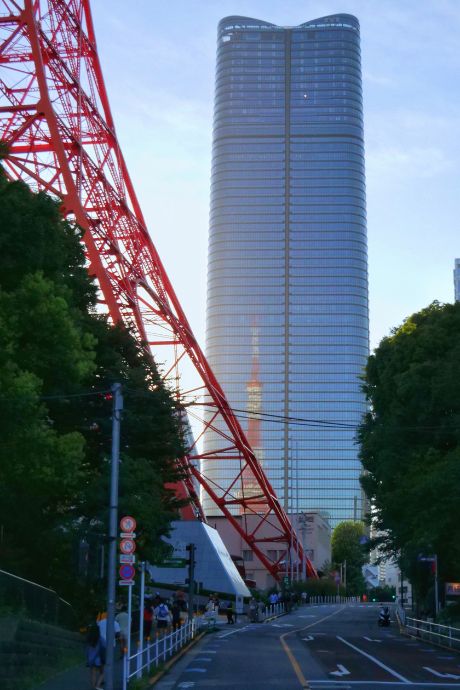
Transportation Guide
In this section, we’ll look at how to get to Tokyo Tower by train, bus, car, or bike.
By Train
The easiest and quickest way to get to Tokyo Tower is by subway or train. There are many stations near Tokyo Tower, all within a 15-minute walk.
- The Subway Oedo Line takes you to Akabanebashi Station. From there, it is a 5-minute walk from the Akabanebashi Gate.
- The Tokyo Metro Hibiya Line will stop at Kamiyacho Station. From there, take Exit No. 1, and it will be a 7-minute walk.
- The Metropolitan Subway Mita Line will take you to Onarimon station. From there, Exit No. A1 will be a 6-minute walk. This line also stops at Shibakoen Station. From there, take Exit No. A4 and it will be a 10-minute walk.
- The Metropolitan Subway Asakusa Line stops at Daimon Station. From there, take Exit No. A6, and from there, it will be a 10-minute walk.
- Lastly, you can ride the JR line to Hamamatsucho Station. From there, take the North Exit, and it will be a 15-minute walk.
By Bus
From Tokyo Station, you can also ride the Tokyu Bus. The bus leaves from Marunouchi South Exit and goes to the Tokyo Tower bus stop in 30 minutes. From the Tokyo Tower bus stop, it is a 1-minute walk. Adult tickets are 220 yen (US$ 1.50), and children’s tickets are 110 yen (US$ 0.80).
The JR Takeshiba Hydrogen Shuttle Bus is a free shuttle bus from Tokyo Station Marunouchi Exit to Tokyo Tower. This journey will take you 38 minutes.
There are also several bus stops near the Tokyo Tower for convenient access. The Toei Bus can take passengers to Tokyo Tower (for Shinagawa Ekimae and Shinagawa Station Konan Exit), Higashi-Azabu Itchome (for Hamamatsucho Station, Tamachi Station, and Shinagawa Station Konan Exit), and Toranomon Gochome (for Shibuya Ekimae and Shimbashi Ekimae).
By Car
For those driving and taking a car to Tokyo Tower, on the Inner Circular Route, it is 7 minutes from Shiba-koen Exit. A car park next to Tokyo Tower charges 600 yen (US$ 4.20) for the first hour and 300 yen (US$ 2.10) for every 30 minutes extra. The car park is open from 9:00 to 23:00.
By Bike
There is bicycle parking inside the south-side parking lot of Tokyo Tower. The bicycle parking is free for the first two hours and will then cost 100 yen (US$ 0.70) every four hours. Motorbikes can also park here for the price of 300 yen (US$ 2.10) every four hours.
Tokyo Tower Hours of Operation
Before visiting, you may want to know the Tokyo Tower’s opening hours and the best time to visit.
The Tokyo Tower hours vary slightly depending on what deck you want to visit. The Main Deck (150 metres or 490 feet) opens at 9:00 am and closes at 10:30 pm. The last admission is at 10:00 pm. The Top Deck (250 metres or 820 feet) opens at 9:00 am and closes at 10:15 pm, with the last admission being 9:30 pm – 9:45 pm.
As for the best time to visit Tokyo Tower, it depends on what you want to see. During the day, you can see how massive Tokyo is. If it is very clear, you can even spot Mt. Fuji. During the night, Tokyo comes alive, and you will be greeted by a sea of twinkling lights from the viewing deck.
The best advice would be to try and see both if you have the time. The Tokyo Tower has no limit for the Main Deck. You can stay as long as you please. Visitors can travel up the tower and see Tokyo when it is bright. Then take some time to relax, enjoy refreshments or ice cream and wait for it to get dark.
Another method would be to buy a Top Deck ticket for a time after sunset. Visitors can go to the Main Deck and spend time there while it’s light and then head up to the Top Deck to see the beautiful city lights after dark.
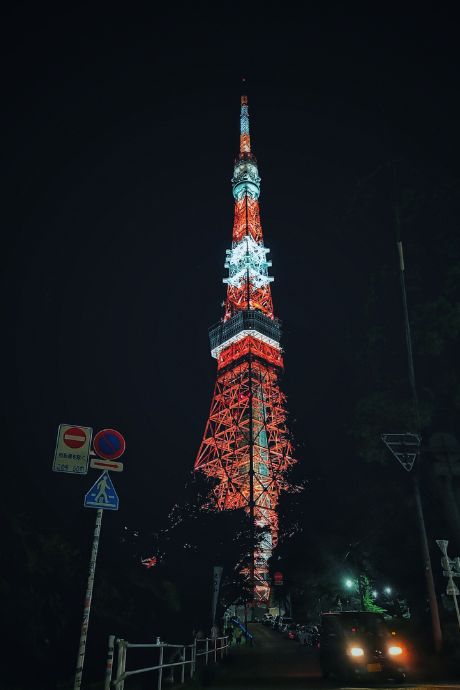
What’s Inside Tokyo Tower
Tokyo Tower is much more than a stunning structure, but what does the Tokyo Tower inside have going on?
Overview of Foot Town
First-time visitors to Tokyo Tower will be surprised to discover that there is a five-floor building to explore called Foot Town. This area is full of shops, cafes, restaurants, entertainment, and more.
After the entrance, on the first floor, there is a welcome lounge and ticket counter. This is the place to go first for your tickets.
The elevator gate to the Main Deck is also located on the first floor. The elevator gate looks luxurious and sets the vibe before you travel up 150 metres (490 feet) to the Main Deck. You will then switch to another elevator to travel to the Top Deck at 250 metres (820 feet) above sea level.
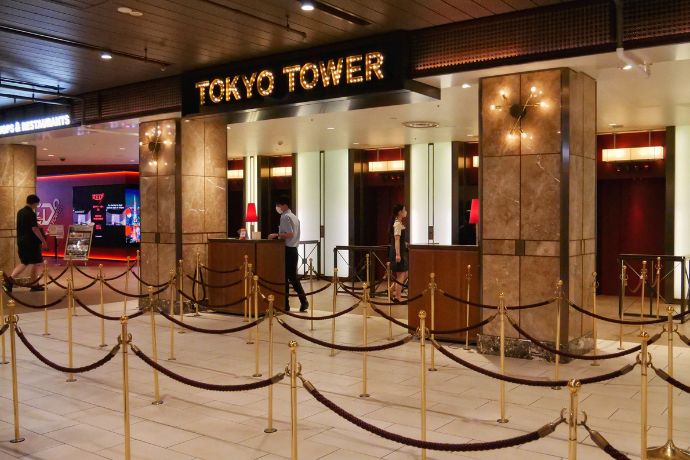
The second floor features a food court with a variety of different restaurants. You can find everything from the Japanese burger chain Mos Burger to Ramen restaurants to Baskin Robbins.
The second floor is also your stop for souvenirs and shopping. A large variety of souvenirs are available at shops such as Tokyo Print Kobo Shop and The Tokyo Tower Official Gift Shop. For those not looking for traditional souvenirs, there is Tokio 333, which sells a bunch of Sanrio and Hello Kitty merchandise. And there is also an entire Ninja-themed shop.
Red Tokyo Tower Digital Amusement Park
Another reason to visit is Red Tokyo Tower. Red Tokyo Tower is Japan’s largest VR/AR/eSports Theme park, sprawling over four floors. Perfect for families, friends, couples, and solo travellers to enjoy.
The third floor is a lounge area with projection mapping and a massive LED Screen. Here you can enjoy retro games like Street Fighter and Pacman or VR games like Kat Walk and Beat Saber.
The fourth floor has plenty of sports games and fun activities that require you to use your body. Archery, baseball batting, basketball, and cycling are among the most popular. There are also VR shooting games to test your skills.
The fifth floor has VR racing simulators and motorsports games. If you enjoy board games, this is also your chance to play traditional Japanese or international board games.
You can purchase your Red Tokyo Tower one day or night unlimited passes through Klook or Get Your Guide.
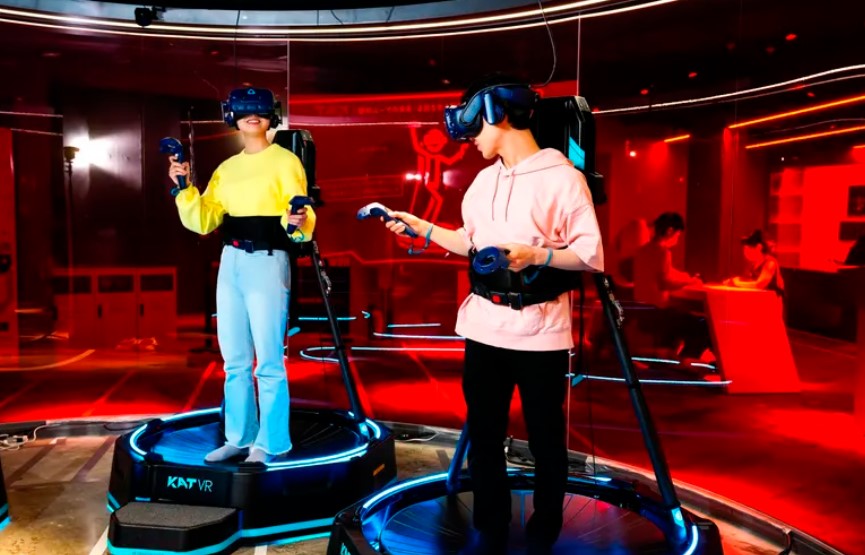
Main Deck
Your first stop travelling up the tower will be to the main deck. Get the Tokyo Tower elevator from the ground floor after showing the staff your ticket.
The glass elevator walls offer some quick but stunning views of Tokyo while travelling up 150 metres (490 feet) in only 45 seconds.
The main deck has windows that cover all sides of the observatory, which allow you to get spectacular views of Tokyo from every angle. The main deck has two floors; both need to be explored to get the whole experience.
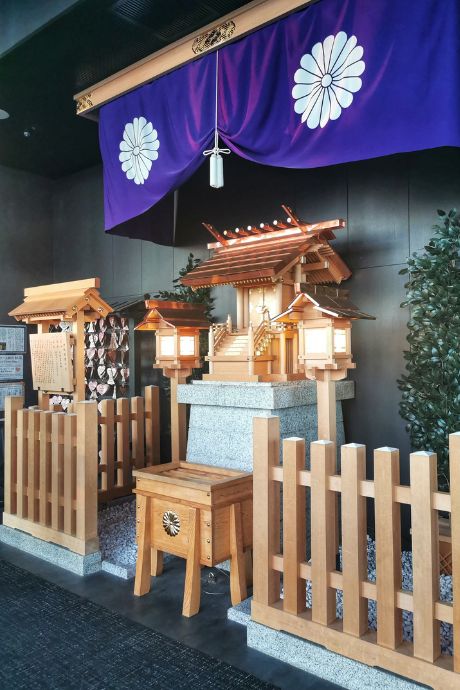
The Main Deck features the Great Shinto Shrine of the Tower, a shrine located in the highest location in all of Tokyo. This shrine is for prayers of school success and also love. Many students visit the shrine while preparing for exams.
Another unique feature of the Main Deck is the Tokyo Tower post box. This post box is shaped like Tokyo Tower, and visitors can post letters and postcards from here. These letters will be stamped with a special postmark of Tokyo Tower and Zojo-ji Temple.
If you want to send someone a postcard or a letter from Japan, this is one of the best places to do it because it creates an original souvenir. The gift shop on the Main Deck’s second floor sells postcards and stamps if you have not prepared this in advance.
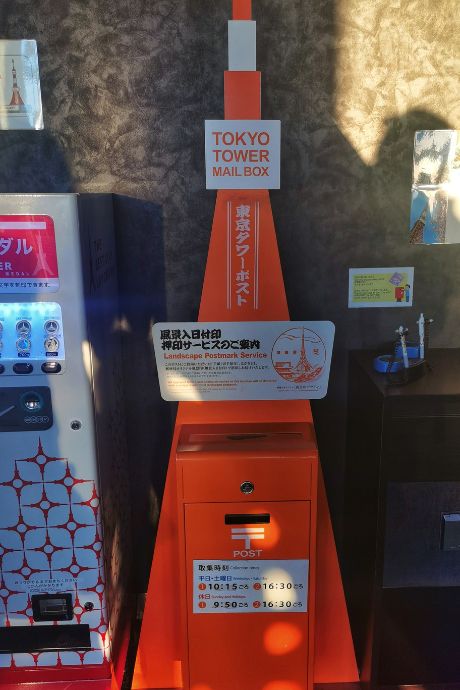
Club 333 on the Main Deck is a nice area to relax. You can sit down while you enjoy a live music performance or a movie displayed on a 260-inch LED monitor with booming sound equipment. When we visited, there was a fascinating documentary about Tokyo that was playing, which was subtitled in English.
Top Deck
The Top Deck is accessed by elevators that leave from the Main Deck. These tickets must be purchased in advance either online or from the first-floor ticket counter. The elevator to the Top Deck will whisk you up 250 metres (820 feet) to give you a breathtaking bird’s eye view of Tokyo.
While waiting to board the elevator, you will be given an audio guide. This free audio guide is available in 13 languages, and you can listen to it as you explore the Top Deck views. The guide explains Tokyo Tower and certain buildings you can spot from the windows.
The Top Deck features a hospitality service that will make you feel like a VIP. There are welcome drinks that you can enjoy while waiting to have your photograph taken by a professional. All Top Deck visitors can receive a free printout of their photograph in a retro newspaper style or pay for a larger print for 1500 yen (US$ 10.50).
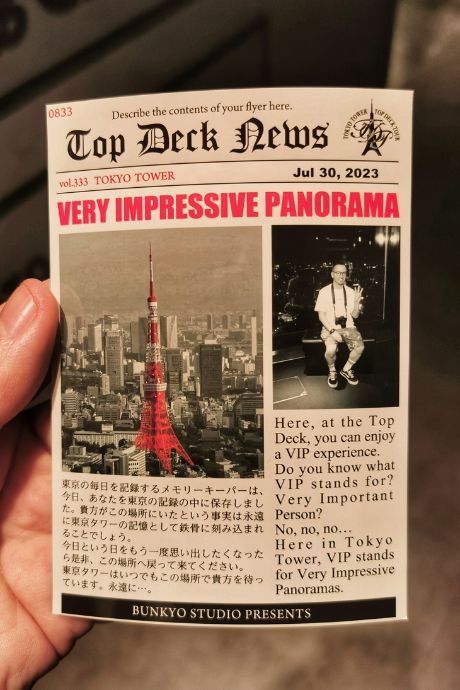
The Top Deck has views of Tokyo that you must see to believe. The city buildings of Tokyo appear to stretch to the horizon.
If you need help seeing far enough, a free binoculars rental service is available to all Top Deck guests.
History of Tokyo Tower
Before visiting Tokyo Tower Japan, you might have a few questions, such as why Tokyo Tower was built. Or who built Tokyo Tower? Or when was Tokyo Tower built?
Although commonly referred to as Tokyo Tower, its real name is Nippon Denpatō or Japan Radio Tower. In 1953, the Japanese national broadcaster NHK started. Tokyo required an extremely tall broadcasting tower covering the entire city from one broadcasting tower.
Hisakichi Maeda, the founder of Nippon Television City Corporation, teamed with the architect Tachū Naitō to create and design the tower.
Rather than building a simple giant broadcasting pole, they wanted to make something that would become a symbol for Japan.
They realized the tower’s height would make it an important part of the Tokyo skyline, so they looked for inspiration from other famous landmarks before deciding to base their design on the Eiffel Tower.
The tower began construction in June 1957. It was completed in 1958 and opened to the public on December 23rd of that same year. Several radio and TV stations used Tokyo Tower for broadcasting, and it is still used for some analog and digital services. From its opening, the tower has also served as an observation tower.
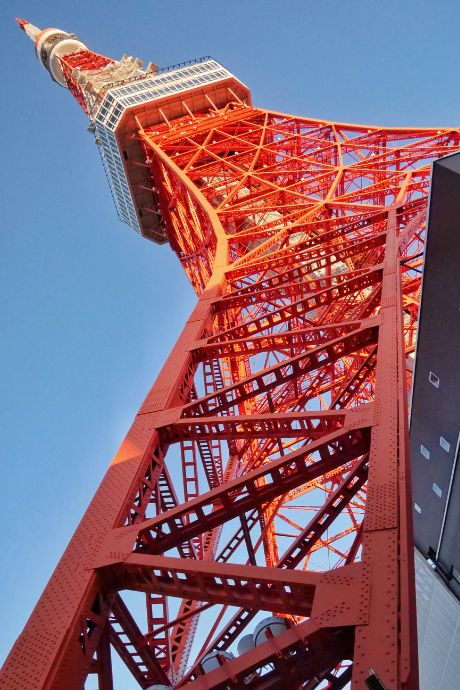
Fun Facts about the Tokyo Tower
The Tokyo Tower height is an easy-to-remember 333 metres (1 090 feet). It was the tallest freestanding tower in the world when it was built. In Japan, it remained the tallest tower until the Tokyo Skytree finished construction in 2010. Skytree is now the tallest building in Tokyo, which stands at 634 metres (2 080 feet).
But how tall is Tokyo Tower compared to modern skyscrapers? It’s currently still the second-highest tower in Japan. The third highest building in Tokyo is the newly completed Azabudai Hills Mori JP Tower which stands at an impressive 325 metres (1 070 feet). It is followed by Toranomon Hills Mori Tower, which stands at 255 metres (840 feet).
Another very popular observatory in Tokyo is Shibuya Sky, in the Shibuya Scramble Square building. The building is the highest in Shibuya, with a height of 229 metres.
Tokyo Tower vs Eiffel Tower
These two towers are often compared as the Eiffel Tower-inspired Tokyo Tower. There external design is close enough that Tokyo Tower has been described as the Tokyo Eiffel Tower or the Red Eiffel Tower.
The Eiffel Tower is older as it was completed in March 1889, and Tokyo Tower was finished in late 1958.
The Tokyo Tower is taller by three metres (10 feet) than the Eiffel Tower, which stands at 330 metres (1 080 feet). The main Tokyo Tower structure has four floors, served by four elevators. In comparison, the Eiffel Tower has three floors, served by seven elevators.
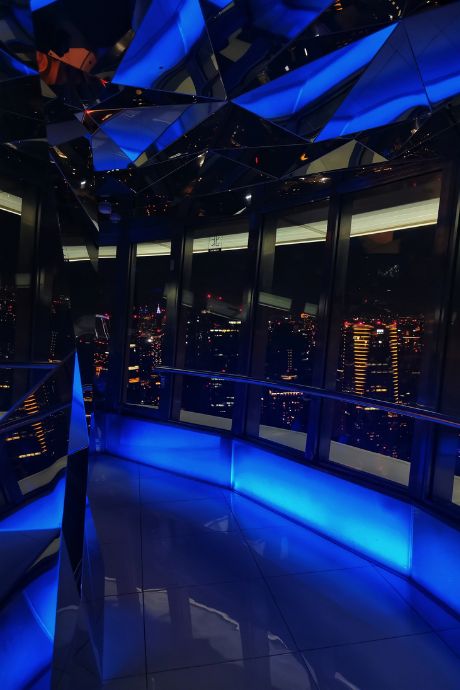
The Eiffel Tower top observatory is taller at 276 metres (900 feet) compared to the Tokyo Tower Top Deck at 250 metres (820 feet). The base of Tokyo Tower has a width of 80 metres (260 feet) compared to the Eiffel Tower’s 125 metres (410 feet).
Tokyo Tower is higher than Eiffel Tower, but it weighs far less. Tokyo Tower weighs around 4,000 tons, and the Eiffel Tower is almost 8,000 tons.
The Eiffel Tower is located amidst an open area, compared to the Tokyo Tower, which is surrounded by a huge cityscape. They offer opposite views from the top.
The Eiffel Tower attracts more visitors yearly, nearly 7 million compared to Tokyo Tower’s 3 – 4 million.
Tokyo Tower Views
Tokyo Tower offers spectacular views of Tokyo. The view from Tokyo Tower changes drastically between day and night. During the day, you can see the massive scale of Tokyo as the buildings seem never-ending. Also, with the chance to spot Mt Fuji and other famous landmarks, a day trip shouldn’t be skipped.
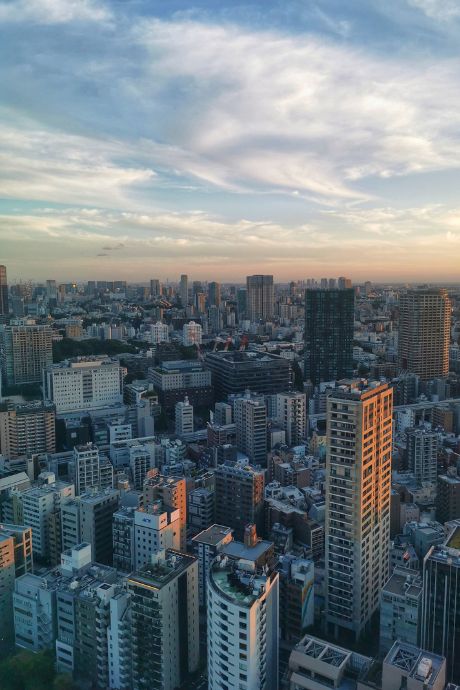
Tokyo Tower at night is equally impressive. At night Tokyo comes alive, and the top of the tower offers a spectacular view of a sea of white and red lights. It depends on which type of view you’d prefer, but if you have the time, it’s possible to do both, as there is no time limit on the Main Deck.
While the Tokyo Tower view is outstanding, the structure itself is beautiful, and there are plenty of places to get the best views of Tokyo Tower.
Shiba Park is a nearby park that offers great views of the tower framed by rows of trees.
Zojoji Temple offers a great comparison of the past and future as you can see this beautiful old temple with Tokyo Tower standing tall behind it.
The Tokyo skyline also looks stunning when it features Tokyo Tower. Why not visit another observatory like the World Trade Center or Roppongi Hills Mori Tower and see the complete cityscape view featuring the tower?
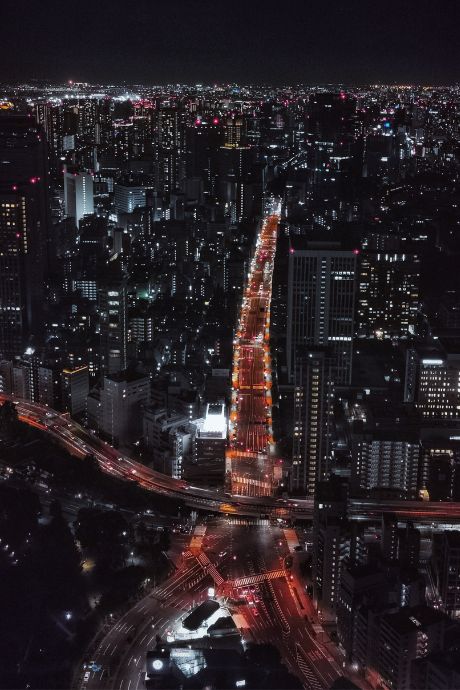
Tokyo Tower Cafes, Bars, and Restaurants
Before entering the main Foot Town building, a crepe shop called Marion Crepes features over 50 different flavours of sweet crepes. If you would prefer chocolate, why not try Ken’s Cafe? This Gâteau au chocolate specialty store uses the world’s best chocolate. It is known as the best Gâteau au chocolate in Japan.

The second floor of Foot Town features a large food court with various restaurants. Japan’s popular burger chain Mos Burger has a shop here. There is a Tanbaya that sells rice bowls topped with sliced pork.
For ramen enthusiasts, a ramen shop called Umeiya offers various styles and toppings.
Prefer soba or udon? Sake Diamond Cafe has you covered, and they also sell a wide collection of alcohol.
You really can’t go wrong with pizza. Japan’s number one pizza delivery chain Pizza-la has its very own restaurant here, cooking fresh pizzas for visitors.
Great news for visitors that eat halal. Siddique Palace & Siddique Kebab serves a variety of authentic Pakistani dishes, such as curry and kebabs.
The Main Deck also has its very own unique cafe. For a quick bite to eat, visitors can check out Cafe La Tour before you journey up to the Top Deck or back down to the ground. This cafe features soft-serve ice cream and popular Arabiki sausage hotdogs. Yum!
Shops and Merchandise at Tokyo Tower
The Tokyo Tower shops offer a unique chance to buy souvenirs and unexpected items. Foot Town’s second floor is a great place for souvenirs and shopping.
Tokio 333 is a shop that is full of Hello Kitty, Sanrio, and other cute Japanese merchandise. Anime fans can enjoy browsing a great selection of anime figures, plushies, badges, and more at Heian.
The most surprising of all the shops is Ninja Prop Shop Tokyo, which sells various ninja products, including weapons and armour.
For your more traditional style of souvenirs, the Tokyo Print Kobo shop has a wide range of T-shirts, magnets, and keychains, all Tokyo Tower themed. TPK is also tax-free, so remember your passport.
Another must-stop for souvenirs is Fuji. This shop has been at Tokyo Tower for 65 years and sells a variety of nostalgic souvenirs and gifts.
Travel to the third floor to find the important photo pick-up counter. Everyone who visits the Top Deck will receive a free photograph which is printed in the style of an old newspaper article. There is also a chance to purchase a larger high-quality print of the photo for 1500 yen (US$ 10.50).
Next to the photo counter, you will find Mother’s Farm. It’s a small cafe that serves rich soft-serve ice cream and various other sweet treats.
The third floor is also home to the Tokyo Tower Official Gift Shop. This shop sells original and official Tokyo Tower merchandise that you won’t find anywhere else.
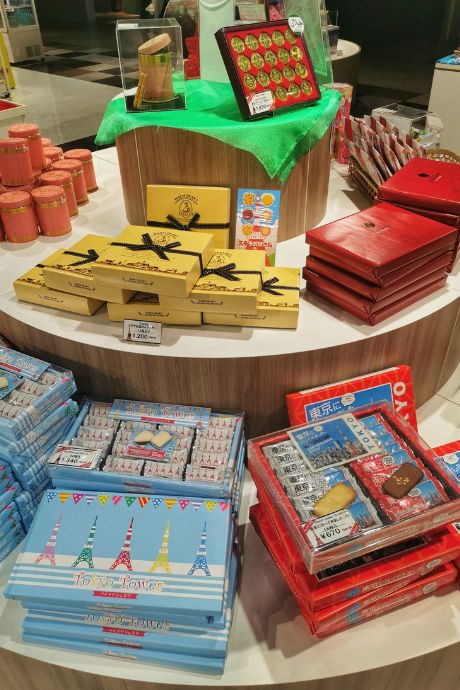
There are jigsaws and Tokyo Tower models, which look very impressive. And the big sellers are Tokyo Tower candies and Tokyo Tokyo-shaped bottles, which are fun souvenirs to pick up for friends and family. This is the one shop that visitors really can’t miss.
If you skipped the gift shops at Foot Town, the Main Deck has its own Official Shop. This shop features over 300 Tokyo Tower items, including jigsaws, keychains, magnets, pens, t-shirts, and more.
Top Tips for Tokyo Tower
Here are my top tips for Tokyo Tower, including the best time to visit, accessibility information, tips for families, and what to wear or bring.
Best Time to Visit
Winter is one of the best times to visit Tokyo Tower as the skies are clearer, and you will have the best view from the top. This is also your best shot at spotting Mt Fuji from there.
During the day, you will get a deeper feel for the scale of Tokyo and be able to spot more landmarks. But the night view is more atmospheric as you see millions of lights from the top.
On our last visit, we did both. We went up to the Main Deck at 5 pm and spent two hours taking in the daytime views and the beautiful sunset. Then at 7 pm, we travelled up to the top deck to admire the lights of Tokyo at night.
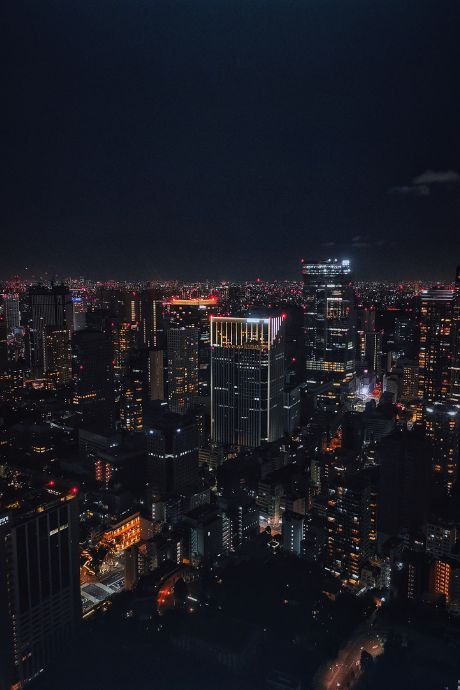
Accessibility Information
For visitors with wheelchairs, a barrier-free way will take you on the elevator to the second floor of the Main Deck. If you want to move to the first floor, don’t hesitate to get in touch with a nearby staff member. There are also rental wheelchairs available.
There are Accessibility toilets available on the first and second floors of Foot Town. And one on the second floor of the Main Deck.
A guide, hearing assistance, or service dog may accompany visitors.
Tips For Families
There are restrooms with baby changing stations on the first floor of the Main Deck and Foot Town. There is a nursing room available on the third floor of Foot Town.
Strollers are free to board the elevators. However, if it is busy, you may be asked to fold them up. Strollers are also available to rent from the first-floor information desk.
What to Wear/Bring
Make sure to wear comfy shoes. Although Tokyo Tower is an observatory, there is also a lot of walking and exploring. So make sure you consider this. Tokyo Tower is all inside from the elements, so dress depending on how the weather suits the day.
Ensure you bring a camera or your phone if it has a decent camera. There are plenty of amazing photo opportunities that you won’t want to miss. A pro tip for your photographs from the observatory is to press your camera right up against the glass to kill all the reflections that would ruin your photos.
Things to Do Near Tokyo Tower
The Tokyo Tower can be a full day out on its own, but are there other attractions near it?
A visit to Tokyo Tower should always include popping by Zojoji Temple. This is a very important Buddhist temple and was one of the largest during the Edo period. You can also take the iconic photograph of the temple with Tokyo Tower standing behind it.
Shiba Park is a nearby park to Tokyo Tower with free access. This is a great place to relax and enjoy some views of the tower while surrounded by greenery. This is also a popular area to have a picnic.
Also in the area is the Hama-Rikyu Gardens. This is a beautiful traditional Japanese garden that opened in 1946. The gardens have traditional Japanese features, but tall skyscrapers surround them. It also features a gorgeous tea house that serves matcha.
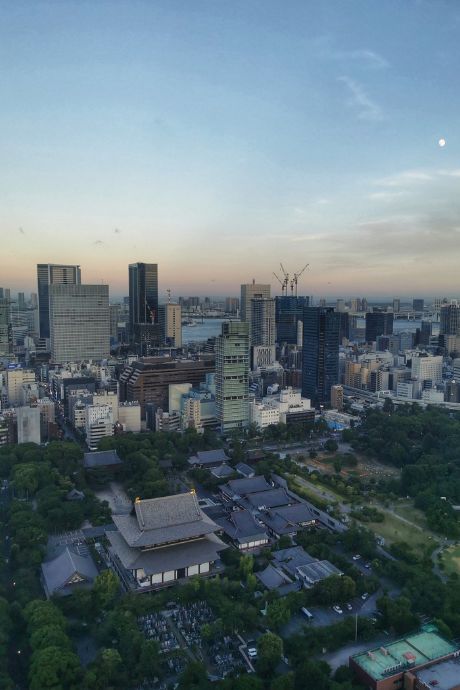
- Klook offers the option for all ticket options, including Main Deck, Top Deck or a Main Deck Unlimited Pass (a great option if you want to view both during the day and at night time)
- GYG offers only Main Deck Tickets
- The Klook Greater Tokyo Pass includes discounted tickets to visit the Tokyo Tower Main Deck, as well as many other Tokyo attractions.
- Can also bundle your Red Tokyo Tower Passport
Frequently Asked Questions about the Tokyo Tower?
Before visiting Tokyo Tower, you might still have some last-minute questions. We’re here to try and answer any final concerns and queries.
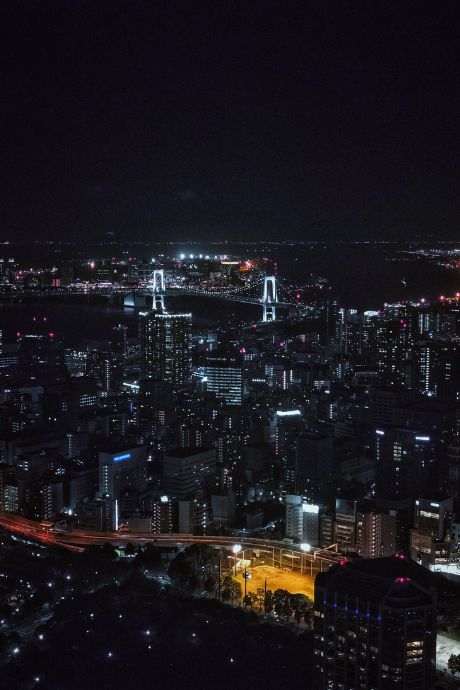
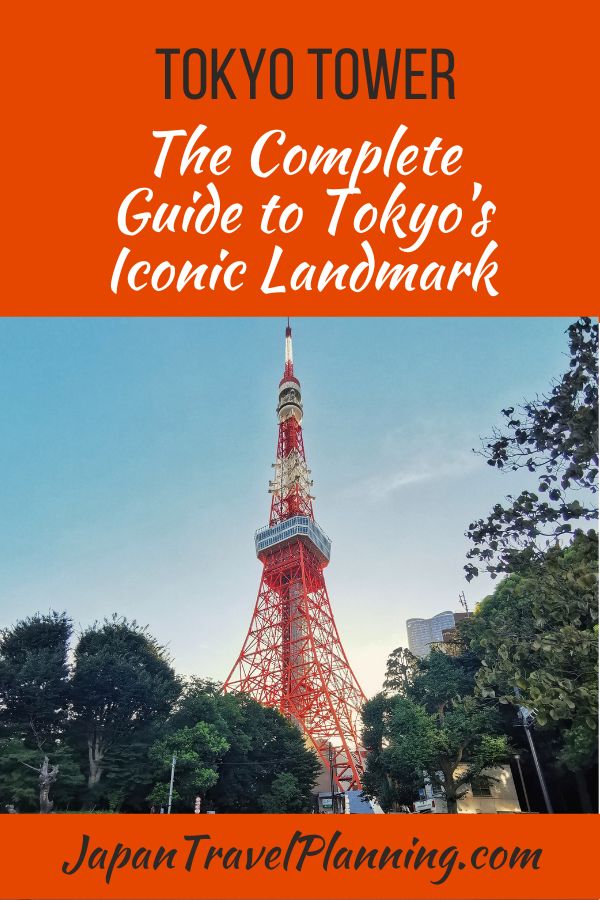
Join the Japan Travel Planning Facebook Group or Discord Server
You are also welcome to join our Japan Travel Planning Facebook Group and our Japan Travel Planning Discord Server – they are great resources to enable you to ask questions about your upcoming trip to Japan!
Disclaimer: This article contains affiliate links. If you book after clicking on one of these links then we may receive a small commission at no extra cost to you.

